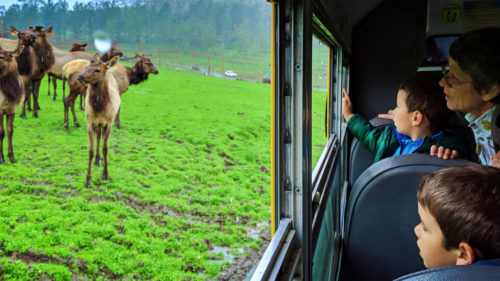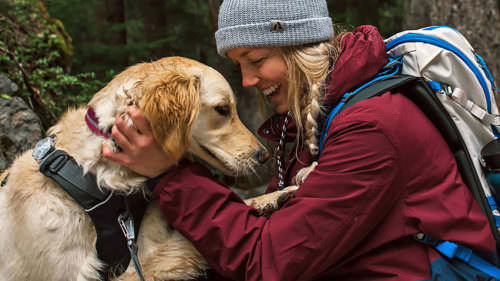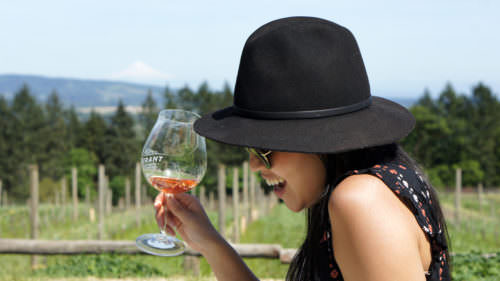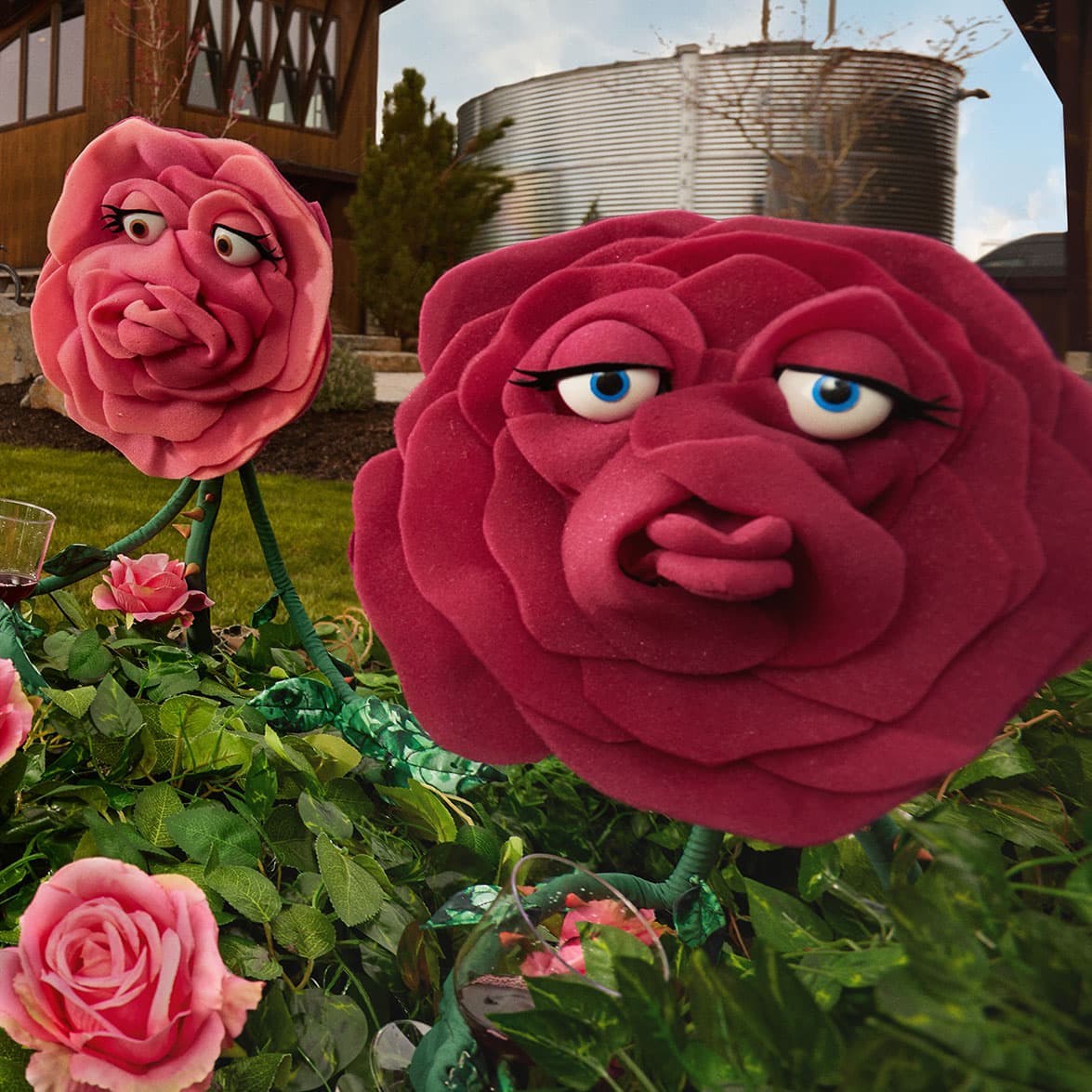The beauty of the Pacific Northwest can have a powerful effect on people. Just ask Scott Kranz. In 2013 the Minnesota native followed his wife out west, took a hike in the Cascades and promptly realized his law career was keeping him from what he was really born to do: trek through the region’s snowcapped peaks and misty forests with a camera in hand.
Within two short years, Kranz had ditched his office job and embarked on a career as a full-time photographer specializing in mountaineering and outdoor adventure, racking up a client roster that includes Eddie Bauer, Gore-Tex and Garmin, not to mention an extraordinarily popular Instagram feed: @Scott_Kranz. His posts beautifully capture nature’s moody grandeur, and it’s clear he’s fueled by passion, rising before dawn to capture the sunrise, or backpacking along craggy cliffs until the shadows hit the mountains just right.
Recently, the Seattle-based photographer turned his lens to Central and Eastern Oregon, revisiting a region he thought he knew only to find surprises around every corner. Follow along as he and a fellow photographer friend spend three days in hot pursuit of the area’s high-desert beauty, traveling by car, foot, boat and horse — with occasional breaks for sustenance and sleep.
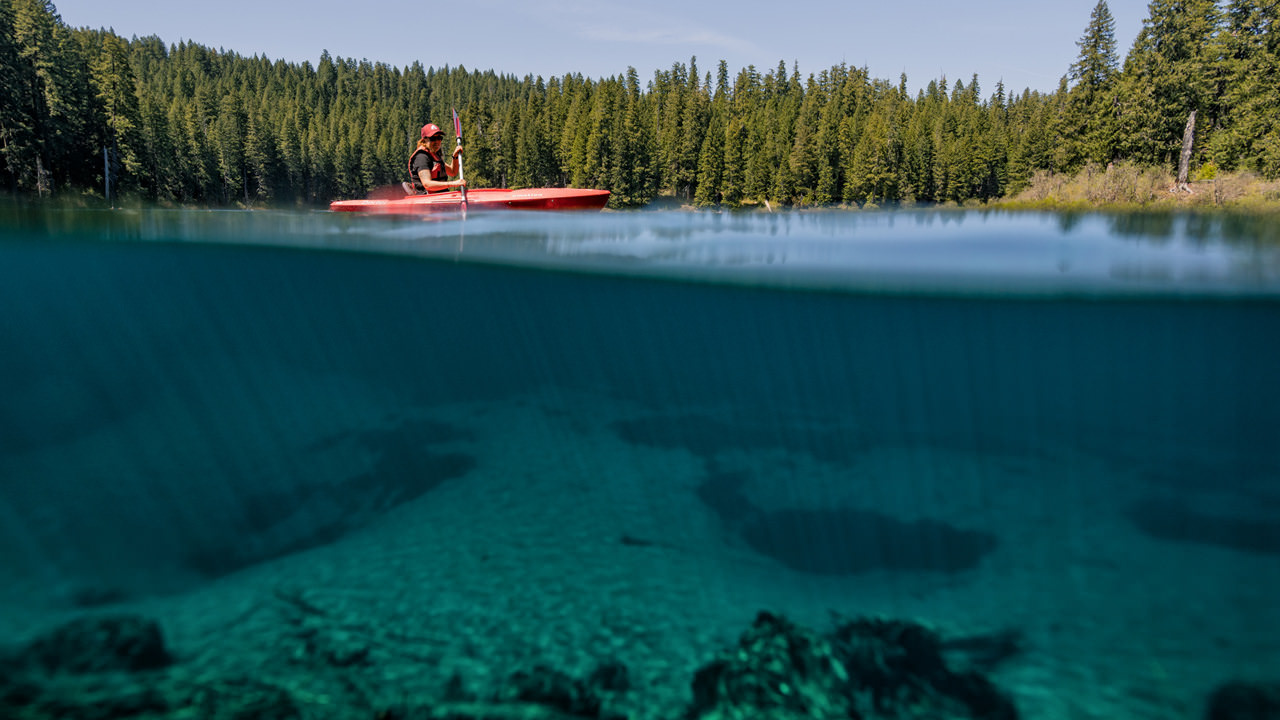
Plunging Right In
After driving down from Seattle, Kranz stopped in Portland to pick up his friend Brooke Weeber, a fellow adventure photographer with her own popular Instagram: @brooke_weeber. Together they made tracks for Clear Lake, about 130 miles southeast of the city. It was his first time visiting the lake, which is renowned for its exceptionally cold and clear water, great fishing and 3,000-year-old submerged forest, making it a popular destination for scuba divers. With kayaks rented from the Clear Lake Resort, they paddled around and took in the scene. “It was a beautiful sunny day, and the water color and clarity just popped all the more,” says Kranz. “Depending on the angle, the water would look turquoise, other times deep blue.”
To get a closer look, he tucked his camera in waterproof housing and jumped in. “It was some of the coldest water I’ve ever experienced,” he says. No surprise, considering the lake is fed by lava-rock-filtered snowmelt cold enough to preserve ancient trees. And, really, it’s no surprise considering Kranz’s relentless pursuit of the perfect shot. “It was actually really refreshing,” he quips.
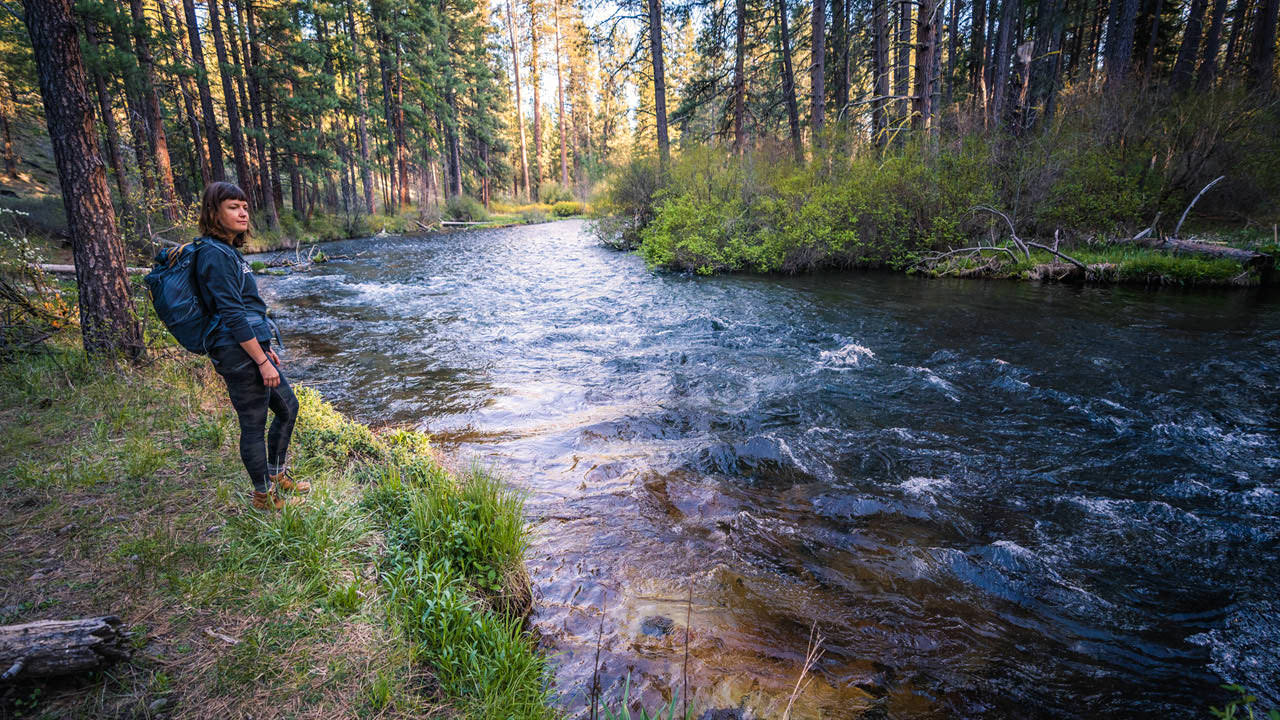
Afterward they made their way to nearby Suttle Lodge on the shores of Suttle Lake, where they checked into a rustic cabin. But they didn’t stick around for lawn games and R&R. Kranz had a sunset to pursue, and he knew just where he wanted to look.
“We drove to the Camp Sherman area so I could experience the Metolius River for the first time,” he says. Although the pristine river is known as an angler’s paradise, it’s just as much of a draw for hikers, too. “It winds through the mountainous area there, hugged by this lush greenery and forest. We hiked along the riverbank, checked out some of the bridges and enjoyed the views of the sunset with the surrounding mountains — Jefferson, Washington and the Three Sisters.”
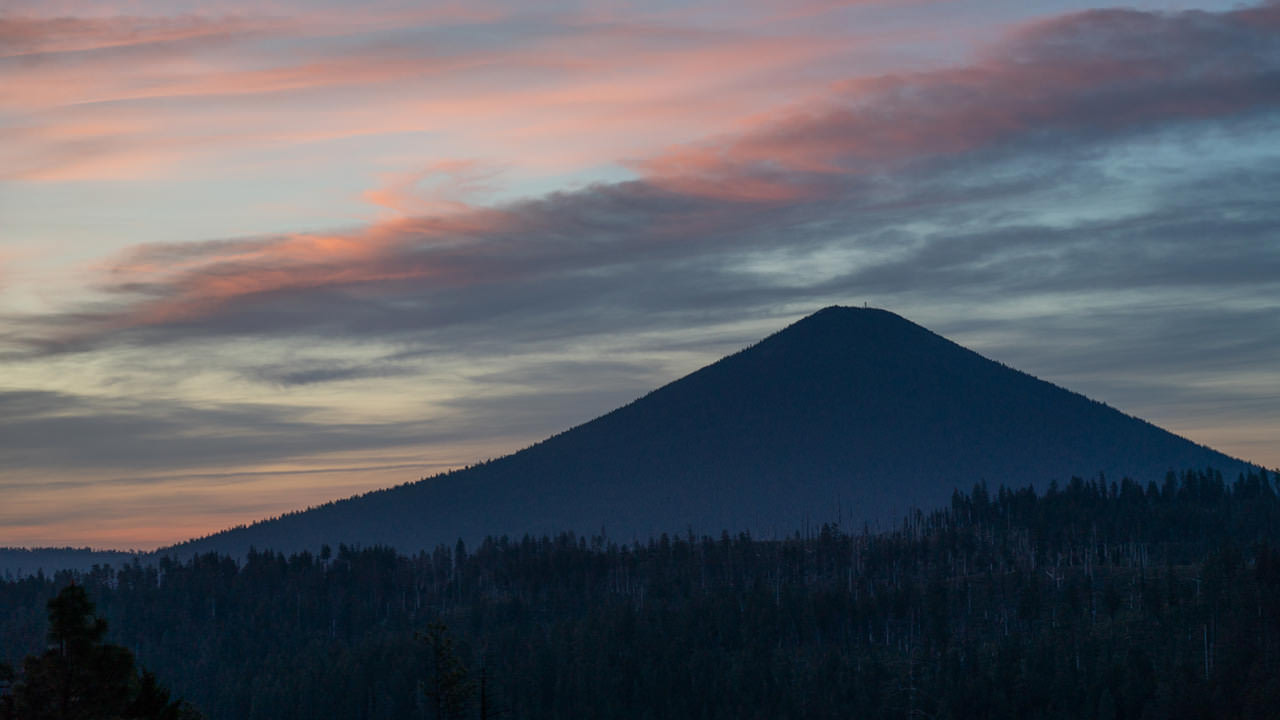
Up With the Sun
Photographers like Kranz have a hard time resisting the urge to capture the dramatic light that comes with the rising and setting of the sun, even though the sunset is so late and the sunrise so early this time of year. (“I lose a lot of sleep,” he says.) So, of course, at the crack of dawn he was already up and on his way to an overlook spot he had scouted out the day before, a mile west of the lodge on Highway 20. “I caught the colorful sunrise with Black Butte on the other side of the lake.”
Then it was off to Sisters for breakfast burritos at Angeline’s Bakery and Cafe. “It was my first time in Sisters, and I realized how quaint it is. It’s definitely a little mountain town I want to visit again.”
But they skipped the shops and galleries this time and got back on the road to go check out Steins Pillar near Prineville. “It’s an amazing tower of rock that shoots out of the Ochoco National Forest,” he says. “It’s a bit of an oddity, but there’s a grand feeling about it. It was like, ‘Wow, that’s something you’d never expect.’”
The hike left them famished, so they headed into nearby Fossil for veggie burgers at Cross Rifle BBQ. This tiny town is home to a great spot where the public can dig for fossils on a hillside behind Wheeler County High School. “We didn’t get a chance to dig this time,” says Kranz, “but I’m definitely going to go full archaeologist next time and get a fossil.”
They checked in at the Wilson Ranches Retreat, both a working cattle ranch and a bed-and-breakfast, which had their cozy quilt-topped beds for the night as well as their four-legged mode of transportation the next morning. But first, you guessed it, they had to head back out to snap the sunset.
They drove an hour southeast to Blue Basin in the Sheep Rock Unit of the John Day Fossil Beds, where interpretive trails and hikes like the Blue Basin Overlook trail, a 3.25-mile loop, wind through the pale turquoise hills. Their otherworldly color was born millennia ago when volcanic ash interacted with celadonite in the soil. “We did the loop hike and caught the sunset,” says Kranz. “That was beautiful. We lucked out on some amazing sunsets and sunrises on this trip.”
The next stop brought more dazzling ancient rock formations, this time in the Clarno Unit of the John Day Fossil Beds National Monument. “It was like a big wall of rock that came out of nowhere,” Kranz says of the towering, craggy Clarno Palisades. These are essentially the eroded remains of a 50-million-year-old volcanic mudslide, from back when this arid region was a tropical rain forest. “It was so beautiful. We hiked up to it and saw this cool arch, and while we were next to the wall, looking southward across the highway, there were these beautiful rolling hills with cool patterns of trees lining the hillside.”
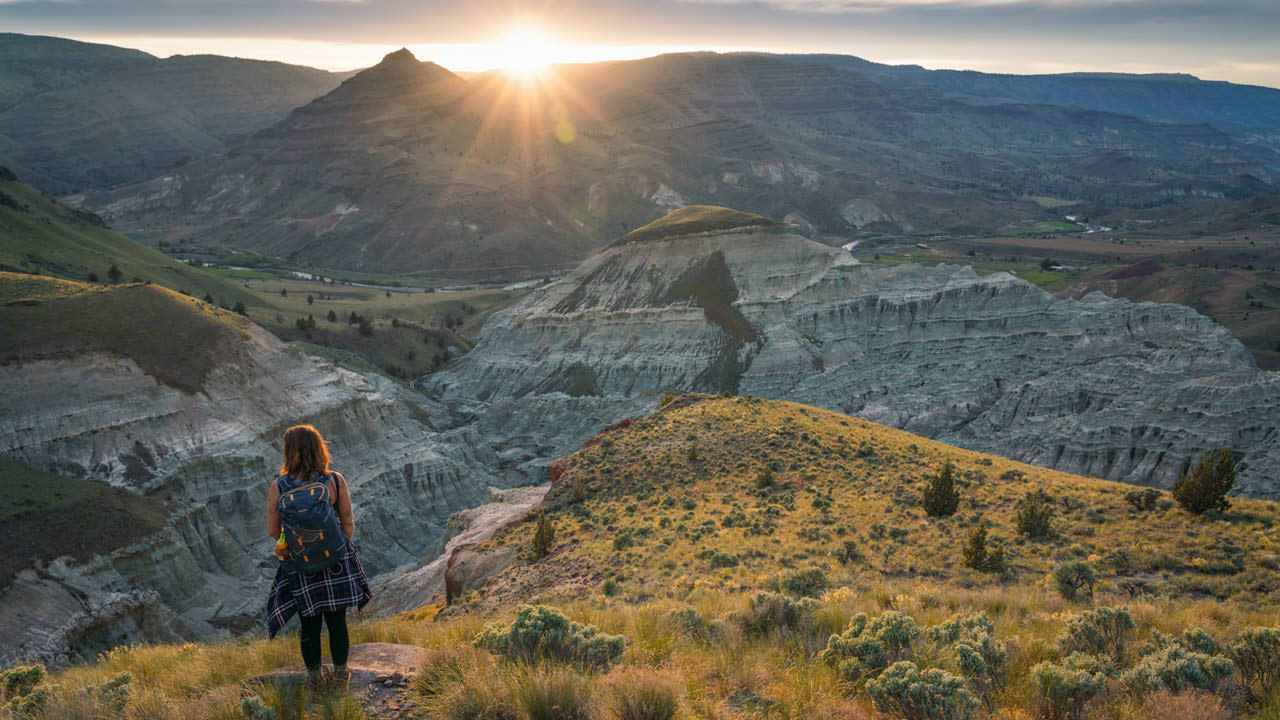
From Ranch to River
After a comfy night’s sleep and a hearty breakfast at the homey ranch, they embarked on a 2.5-hour guided horseback ride, something Kranz admits he doesn’t do often, but he had a great time. “We went up into the hillside above the ranch, and it was super-beautiful scenery. We got to take in the beautiful wildflowers and experience the rural side of Fossil.”
Soon it was time to head back to Portland, but they took it slow, stopping in Condon (“a quaint little town”), then at Cottonwood Canyon State Park, where the John Day River meanders between rugged hillsides, and visitors can borrow one of the “no-frills” loaner bikes parked at the campground to ride around the trails. “We stopped and explored the big, beautiful river. We saw some people floating down, which looked super fun. I’ll have to do that next time.”
From there they continued north to Highway 84 in the Columbia River Gorge and made their way back to Portland along the mighty river. “On the way home, there was some really beautiful scenery. You have these huge fields and pastures that lead up to these lines of wind turbines, and beyond that a line of mountains. And you have the big, blue, beautiful sky.”
Kranz says if he had to sum up his trip to Central and Eastern Oregon in just a few words, it would be “expect the unexpected.” He continues, “It might sound like a cliche, but there are amazing secrets tucked away in that area. Do your research before you go, because if you just stay on the main road, you can miss something. Make use of these little towns that some people drive straight through. They’ll surprise you. Take your time if you have it.”
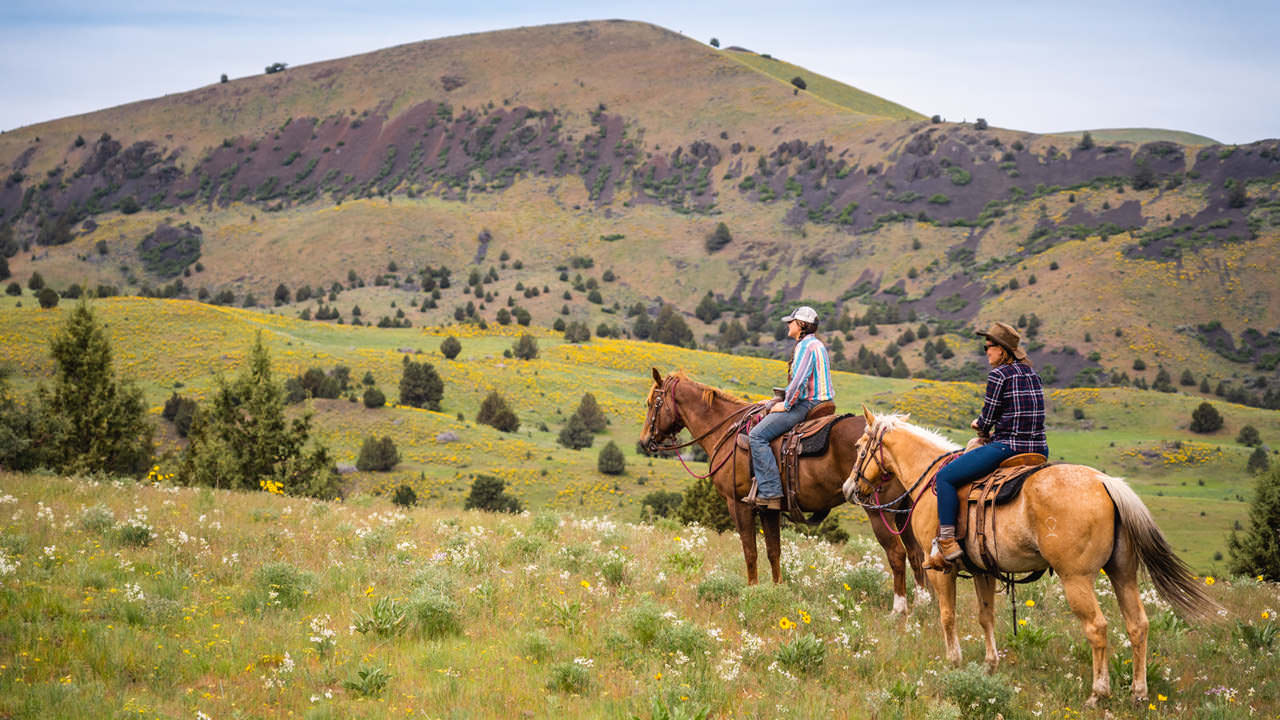
If You Go:
Clear Lake Resort: Operated by Linn County Parks and Recreation, the resort features reservable rustic cabins, boat rentals, a boat launch and a restaurant.
The Suttle Lodge: The Skip Bar at the lodge is open for drinks and food all year round, while The Boathouse restaurant is open from sunup to sundown Memorial Day weekend through mid-September.
Metolius River Hike: Drive about 5 miles north of Camp Sherman on Forest Service Road 14, turn left at the Wizard Falls Fish Hatchery sign, cross the bridge and park at the hatchery (it’s free and there are public restrooms). Hike downstream (north) or upstream (south) until you feel like turning around. For a 6.5-mile loop, hike downstream to the Lower Bridge, cross the river, and hike back on the other side.
Steins Pillar Hike: Take Highway 26 to Forest Service Road 33 (Mill Creek Road). Head 6 miles north and turn right on Forest Service Road 3300-500. Drive 2 miles (take note: This is a bumpy, steeply climbing dirt road) to the parking area for the Steins Pillar Trailhead. The out-and-back trail is about 2 miles each way with about 200 feet of elevation.
Steins Pillar Lookout: Take Highway 26 to Forest Service Road 33 (Mill Creek Road). Head 8 miles north to the marked viewpoint.
John Day Fossil Beds National Monument: Three units spread across Eastern Oregon make up the monument, which is an active research center valued for its wealth of fossils from the tertiary period and for its delicate colored soils. When exploring the area, it’s imperative that you stay on trails, do not take fossils or disturb the soils, and leave no trace.
Wheeler County High School Fossil Beds: Head to the hill behind Wheeler County High School’s football field and look for a sign with instructions, tips and a fee slot. Cost is $5 per person or $15 for a family of four ($3 per additional kid). Stay on the trails and within the designated areas.
Wilson Ranches Retreat: This working ranch/bed-and-breakfast has six guest rooms as well as a communal kitchen and living room. Each day the Wilson Ranches family sits down with guests for a family-style breakfast. You can also arrange guided horseback rides.
Cottonwood Canyon State Park: Campsites and cabins available for reservation. Activities include fishing, hunting and rafting, as well as trails for biking, hiking and horseback riding.
